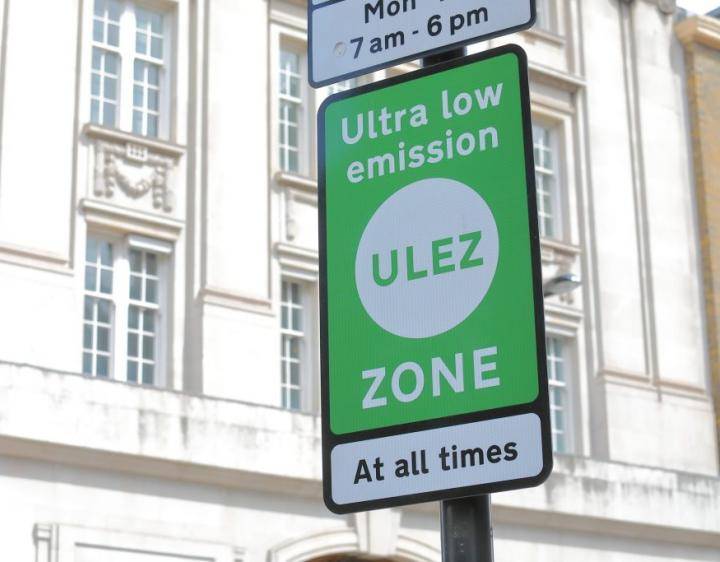
London’s air quality is much in the news of late. As I write this, polluted air on the Underground is making news.1 Your correspondent has already cut his tube usage down to a minimum. But that just leaves me running or cycling through the clogged city streets.
It’s easy to become a bit paranoid about what this is doing to my health. Most of the month I had an irritating cough. Is that just the change in the weather combining with autumn busy-ness? Or something more sinister? Visits to Devon and the Scottish Highlands added to the unease. Can it be possible that the air tastes so much sweeter outside the capital? Am I just imagining it?
As so often with issues like this, the problem is real, even if my projection onto a bit of mild flu is over-stating it. London’s air is genuinely very poor.2 We’ve suffered from illegal levels of pollution since 2010. One King’s College study found it contributed to 9,000 premature deaths each year.3
In London, as in much of Europe, nitrogen oxides are a key pollutant.4 The chief culprit is diesel engines. Ironically this is the result of attempts to address a different problem.
Following the Kyoto Protocol in 1997, governments and the vehicle industry started to address the greenhouse gas emissions challenge. Europe embraced diesel. Diesel produces less CO2 than petrol, for the same distance travelled.
But there were two problems. One is the other toxic oxides that these older diesel engines produced. The other was that many car manufacturers were lying about the emissions performance of their cars. The result was cities across Europe charging headlong into a public health crisis.
In the end, there has been a legal and regulatory backlash. The legal side has seen fines for the manufacturers which had massaged their emissions data. That also prompted regulatory changes to a tougher “real world” vehicle testing regime. London is also in the vanguard of European cities tightening up their transport laws.
In April this year, the “Ultra Low Emissions Zone” (ULEZ) came into force. The ULEZ levies a hefty surcharge on the most polluting vehicles travelling into the very centre of London. In 2021 the zone will expand to a much larger area.
Already this month there is some encouraging data on the impact of the ULEZ. A new report has shown a 38% reduction in more polluting vehicles entering the zone. This equates to 31% lower nitrogen oxide emissions.5
But even cleaner cars are not a panacea. Part of London’s problem is dirty cars. The other part is that there are just too many of them. The sheer number of vehicles creates particulate pollution as dust rises from road surfaces, and from brake pads and other components. In addition to ULEZ there is an ongoing battle in London to reduce congestion.
WHEB’s investment strategy includes lots of companies that can help improve London’s air quality. Horiba and Spectris are involved in “real world” testing of cars. Intertek provides services to test air quality in buildings. They may well use air monitoring equipment from Thermo Fisher or Agilent to do so. Ecolab offers an air quality improvement service. AO Smith sells residential air treatment equipment.
Several of the companies in our Sustainable Transport theme are enabling the transition to electric vehicles. Traffic planners can use software from ANSYS to simulate solutions to the congestion challenge.
But it’s not just this “skin in the game” that keeps us watching how the air crisis plays out. Political energies are currently prioritising other agendas. The world is not getting the political response it needs to many urgent sustainability challenges.
The legal and regulatory responses directed towards cleaning up our air are prototypes for more drastic action required in other areas. First and foremost is of course climate change. But land use, plastics and biodiversity are all queuing up for real responses. Some observers now expect aggressive policy interventions to cause significant disruption to traditional industries. We wrote about the potential for an “inevitable policy response” to climate change in our last quarterly review.6
Perhaps London will demonstrate what can be achieved with genuine political impetus, on a real environmental crisis. And at the same time, it could point the way to a greater change in the way we protect our world.
1 https://www.cityam.com/london-underground-has-the-citys-highest-level-of-air-pollution/
2 https://www.ft.com/content/9c2b9d92-a45b-11e8-8ecf-a7ae1beff35b
3 https://psmag.com/environment/air-pollution-is-killing-london
4 London Councils Report: Demystifying Air Pollution in London
5 https://www.london.gov.uk/press-releases/mayoral/ulez-reduces-polluting-cars-by-13500-every-day
6 https://wheb.clientprojects.co.uk/media/2019/10/20190930-WHEB-Q3-2019-Review-FINAL.pdf
